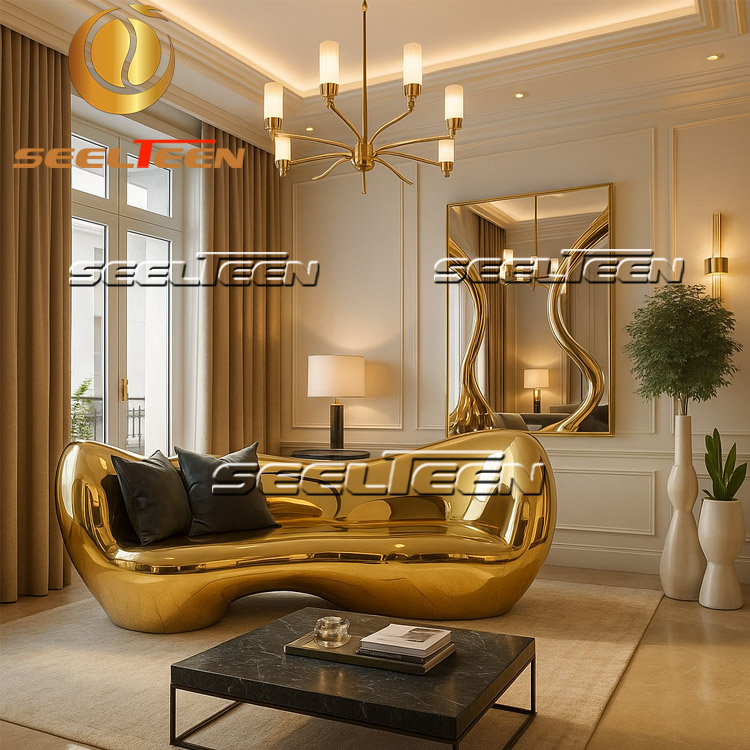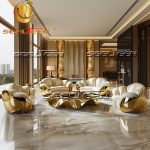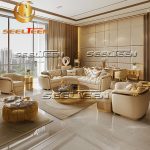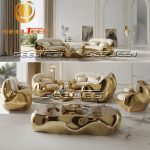Easy Ways to Add Texture to Your Home
Texture is the secret recipe for interior design. It can transform a space from a dull room to a warm and inviting sanctuary, adding dimension, depth, and comfort. Be it a neutral palette or a loud and colorful style, texture lends visual interest and warmth to any room.

1. Layered Textiles
One of the easiest ways to bring in texture is to layer textiles. Imagine soft rugs under your feet, thick woven throws draping over your couch, and plush curtains covering your windows. Introducing different types of fabric-cotton, velvet, and wool, creates an enlivening and welcoming ambiance.
Pro Tip: Drape a Faux Fur Throw on a sleek leather sofa for an opulent contrast in textures.
2. Bring in the Nature Materials
Using natural materials like wood, rattan, stone, linen, and cotton brings texture into every room. The coffee table is made of wood, the planters are made of stone, and rattan chairs are the last pieces of furniture: they all add layers of tactile welcome without overcrowding the room.
3. Add Treatments for the Wall
Walls offer a large canvas of texture. Some experiments you can try include the following:
- Textured wallpaper – from grasscloth to embossed prints.
- Wood paneling – great for rustic or Scandinavian styles.
- 3D wall art – think carved panels or layered canvas pieces.
These treatments can turn even the smallest space into a designer-worthy nook.
4. Mix Metals for Contrast
Be brave enough to combine brass with copper and stainless steel. The mixing of cool and warm metallic tones adds a little sparkle and industrial chic to any space. A stainless steel coffee table or sofa frame is a fabulous stand-alone against a collection of brass light fixtures.
5. Opt for Stainless Steel Furniture
Sleek, modern, and highly stylish, stainless steel will also give your space that cool reflective texture. It works best in modern and industrial interiors.
💡 Shop stylish and durable stainless steel sofa furniture now at www.seelteen.com – just perfect for adding a high-end texture and minimalist elegance in your living room.
6. Add Plants and Vegetation for Decoration
Foliage is not only beautiful, but also has texture! The hard edges against which it breaks are the glossy leaves of a monstera and the delicate fronds of a fern. The bonus is unique pots made of ceramic, terracotta, or woven baskets.
7. Play With the Light and Shadows
Layering your lighting with those sconces, lamps, and diffusers opens a new visual vocabulary of shadow play; it really creates a visual texture. Gentle diffused light effects are created by linen lampshades, while geometric fixtures project patterned shadows across the walls.
8. Adopt the Layered Flooring Concept
Floors should not allow themselves to be flattened. Try:
- A jute rug married with a patterned kilim.
- Add floor cushions or poufs for depth and seating.
Layering floors instantly gives a room that collected and cozy feel.
9. Experiment with Art and Accessories
Break from printed flat art. Go for textured art pieces, like mixed media pieces hung on walls or macrame and sculptural wall-hangings. Layering frames or creating interesting wall compositions using a canvas-and-wood combination further enhances wall interest.
10. Making Use of Upholstered Furniture
This furniture is major in that it is a big textural element. Upholstered pieces in velvet, leather, or even buckled or suede can be inviting to touch and see. Even the small ones, like ottomans or dining chairs, can make an impact.
11. Mixing Patterns and Prints
Even flat fabrics can feel rich when layered with patterns. Mix stripes, florals, and geometrics on varying scales to visually imitate texture. It’s balance-balance the bold with the subtle to keep things within their confines.
12. Use Open Shelving Displays
Open shelves afford great opportunities to layer textures in an interplay of visual possibilities:
-
Stacked books
-
Clay vases
-
Woven baskets
-
Glass and ceramic objects
Such carefully curated chaos is a designer’s delight!
13. Texturing Going Through Paint Techniques
Flat paint? Last season. Try:
- Limewash gives a chalky matte finish.
- Sponge painting shouts vintage.
- Dry-brushing gives an antiquated feel.
These work subtly but create great textures on your walls.
14. Bring in Textures in Functional Items
Texturing can manifest even in everyday items: cable knit storage for bins; bamboo for utensil holders. Choose practical items that work to beautify.
15. Texture by the Season
Switch out textures as seasons change:
- Winter: chunky knits, faux fur, heavy draperies.
- Summer: light linens, cotton throws, light wooden tones.
This is like refreshing your home’s wardrobe!
Conclusion
Texture is everything in the design of a living space; the addition of texture is a true game-changer. All about layers and varieties-from stainless steel sofas to fluffy rugs and leafy greens. No need to undertake a massive renovation; just a few well-thought-out additions will completely transform the place in question.
👉 Ready to step up the texture design of your home? Check out Seelteen for stylish stainless steel sofa furniture, the perfect blend of form, function, and flair.
Welcome to contact us to get the latest price list!
Do you need to read another article? Please click on this: Create A Unique Home Aesthetic
Find us on Facebook, Instagram, and don’t miss a single breath









